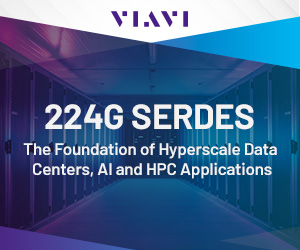The most recent updates to VMware Cloud Foundation (VCF), the company’s premier private cloud platform, were released by Broadcom. With speedier infrastructure modernization, increased developer productivity, and enhanced cyber resilience and security at a low total cost of ownership, the most recent developments in VCF enable clients’ digital innovation.
“VMware Cloud Foundation is the industry’s first private-cloud platform to offer the combined power of public and private clouds with unmatched operational simplicity and proven total cost of ownership value,” said Paul Turner, Vice President of Products, VMware Cloud Foundation Division, Broadcom. “With our latest release, VCF is delivering on key requirements driven by customer input. The new VCF Import functionality will be a game changer in accelerating VCF adoption and improving time to value. We are also delivering a set of new capabilities that helps IT more quickly meet the needs of developers without increasing business risk. This latest release of VCF puts us squarely on the path to delivering on the full promise of VCF for our customers.”
Designed to provide integrated, enterprise-class compute, networking, storage, administration, and security in any context, VCF is intended to update infrastructure and spur creativity. VCF delivers integrated data services capabilities, allows sophisticated AI/ML workloads at enterprise scale, and incorporates native Kubernetes to serve both VM and containerized workloads on a single platform.
Through enhanced observability and insights, IT may empower the company to focus on results rather than operations, safeguard against risks, and constantly improve performance and costs. Customers of VCF get access to capabilities that are matched to every stage of their private cloud journey, from adoption on Day Zero to continuous operations on Day Two.
Customers of VCF software benefit from license portability, which allows them to buy subscriptions of the new software and have total mobility between their supported endpoints of choice and on-premises environment. The latest developments will comprise:
Modernize Infrastructure: Without requiring a complete rebuild of a client environment, the new VCF Import functionality will allow integration of current vSphere and vSAN systems into VMware Cloud Foundation, centralizing administration and optimizing resources.
This will revolutionize the customer settings of today and allow for increased productivity, reduced expenses, and a quicker time to value. With VCF’s comprehensive and integrated support for vSAN Max and vSAN ESA extended clusters, users may now enjoy active-active availability and petabyte-scale disaggregated storage.
In addition to enabling scalable, economical, flexible, hassle-free management and consistent architecture from data center to edge, the new VCF Edge will offer an optimized VCF configuration for edge use cases.
Cloud Experience for Developers: With rapid start templates, simple network connectivity, and enhanced performance insights, the latest version of VCF will streamline the deployment and administration of applications, resulting in a quicker time to market and more developer productivity.
Tanzu Kubernetes Grid (TKG) will be made available by VCF as a stand-alone service. Asynchronous TKG updates will be made to keep up with Kubernetes developments and promptly give developers access to the most recent iterations. VCF networking improves team collaboration, allows more effective CI/CD pipelines, and frees developers from having to deal with complex network needs in order to concentrate on coding and testing.
The ability to quickly transition from conventional VLAN-based network configurations to cutting-edge NSX virtual networking will be made possible by improvements to VCF networking. Self-service load balancing is provided as a DevOps service by VMware Avi Load Balancer with VCF.
Security and Resilience: VCF and associated add-ons such as VMware Live Recovery and VMware vDefend lateral security enable private cloud integrity, higher availability, optimized network performance, malware/ransomware prevention, and robust data protection. New ESXi Live Patching allows administrators to apply critical patches to ESXi hosts without requiring maintenance windows and Flexible VCF Component upgrade provides the ability to apply the latest patches available at the time of upgrading to a new VCF version.
Together these advancements reduce downtime, streamline patch management and enhance system reliability.
Dual DPU support with vSphere Distributed Services Engine will help ensure continuity and protection against DPU failures, provide full isolation of dual independent DPUs, and double the offload capacity per host. vSAN Data Protection will enable administrators to more easily protect and recover VMs from accidental deletions and ransomware attacks.
VMware vDefend lateral security will deliver increased distributed and gateway firewall scale, security information and event management (SIEM) integration for enhanced east-west ransomware prevention, and on-prem network detection and response (NDR) for threat triaging. VMware Avi integration with SDDC Manager will streamline lifecycle management of Avi software from deployment, through provisioning, to ongoing operations.
“The excitement and associated concerns surrounding GenAI and data security reinforce the need for private clouds. Enterprises need to ensure that private corporate data does not find itself inside a public AI model,” said Dave McCarthy, Research Vice President, Cloud and Edge Services, Worldwide Infrastructure Research at IDC. “How customers choose to build private clouds will be driven by the unique requirements of each organization, such as updating legacy infrastructure, advancing the needs of their developer community, or creating a more secure and reliable environment to support a new generation of AI/ML applications. VMware Cloud Foundation continues to evolve as a private cloud platform, and the latest innovations Broadcom is delivering should help customers of all sizes accelerate adoption.”
Optimizing IT Infrastructure with VMware vSphere Foundation
For the past decade, virtualization has helped hundreds of thousands of customers in simplifying the IT environment. Today’s requirements are different. Modern IT must adapt to support AI/ML-enabled applications, developer-driven requirements, and modern threats, while at the same time having to take on more responsibilities with fewer people.
VMware vSphere Foundation is the next evolution of the industry-leading VMware vSphere solution, designed to support modern IT requirements by boosting operational efficiency, elevating security and supercharging workload performance, all in support of accelerating innovation.
The newest update of vSphere Foundation will deliver innovations that include:
- ESXi Live Patching for faster updates with zero downtime.
- Easy access for developers to self-service infrastructure via the vSphere IaaS control plane and a Local Consumption Interface for infrastructure services like VM service and storage service.
- Tanzu Kubernetes Grid Service becomes an independent service, with asynchronous updates enabling customers to consume the latest upstream Kubernetes versions faster.
- Easier management of all vSphere Foundation components with a simplified console including global inventory, simplified diagnostics, centralized certificate management and unified licensing.
- Improved end user experience and security with single sign-on across all product components.
Availability
VMware Cloud Foundation 5.2 and VMware vSphere Foundation 5.2 are expected to be available fiscal Q3FY24.
For Further Info: VMware Cloud Foundation 5.2, VMware vSphere Foundation 5.2, VCF Edge, vSphere 8 Update 3, and vSAN 8 Update 3




